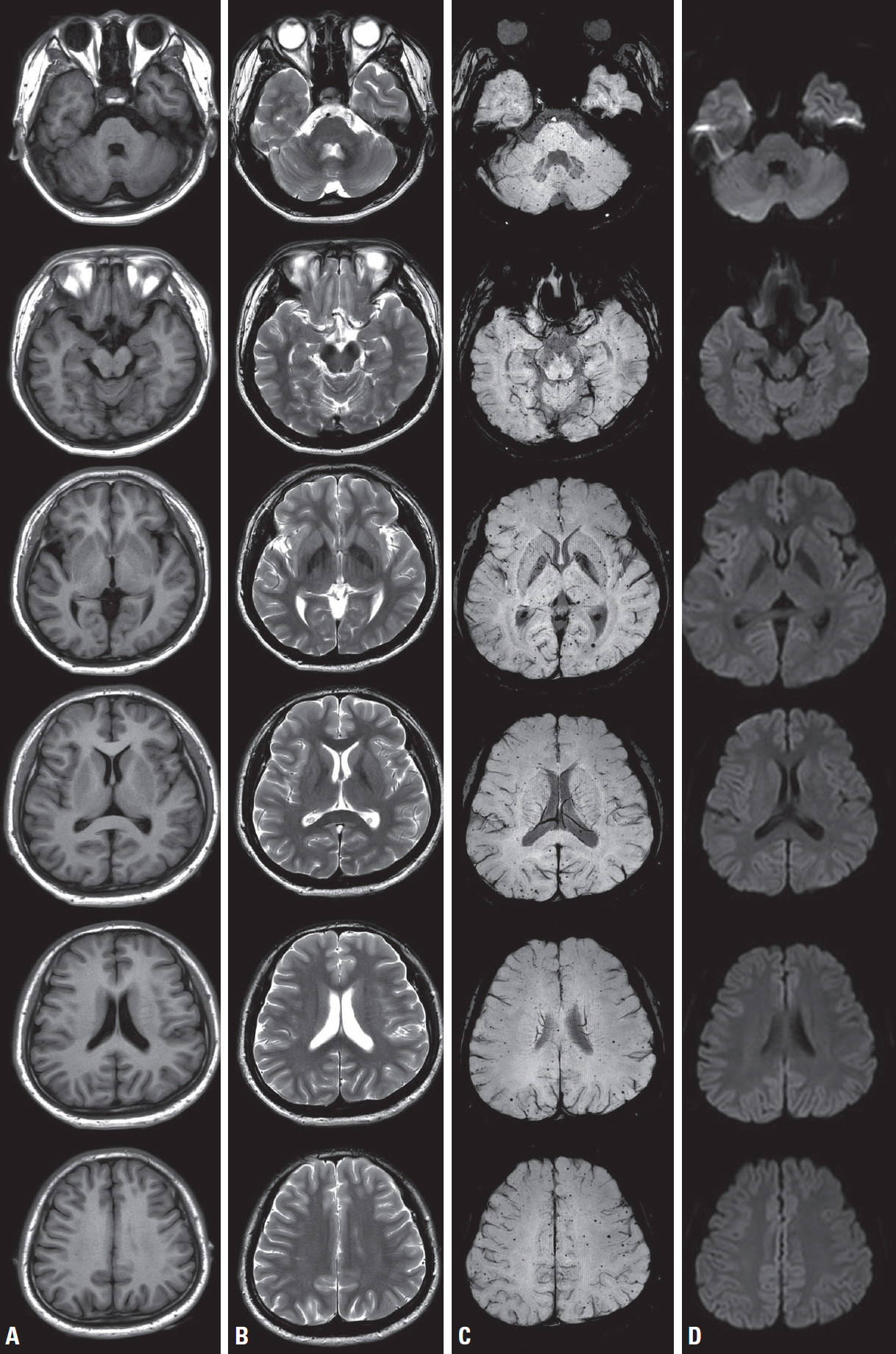Ann Clin Neurophysiol.
2021 Apr;23(1):65-67. 10.14253/acn.2021.23.1.65.
Diffuse cerebral microbleeds in a young adult with Down syndrome
- Affiliations
-
- 1Department of Neurology, Chungnam National University Hospital, Daejeon, Korea
- KMID: 2515611
- DOI: http://doi.org/10.14253/acn.2021.23.1.65
Figure
Reference
-
1. Head E, Phelan MJ, Doran E, Kim RC, Poon WW, Schmitt FA, et al. Cerebrovascular pathology in Down syndrome and Alzheimer disease. Acta Neuropathol Commun. 2017; 5:93.
Article2. Helman AM, Siever M, McCarty KL, Lott IT, Doran E, Abner EL, et al. Microbleeds and cerebral amyloid angiopathy in the brains of people with Down syndrome with Alzheimer’s disease. J Alzheimers Dis. 2019; 67:103–112.
Article3. Carmona-Iragui M, Balasa M, Benejam B, Alcolea D, Fernández S, Videla L, et al. Cerebral amyloid angiopathy in Down syndrome and sporadic and autosomal-dominant Alzheimer’s disease. Alzheimers Dement. 2017; 13:1251–1260.
Article4. Schoeppe F, Rossi A, Levin J, Reiser M, Stoecklein S, Ertl-Wagner B. Increased cerebral microbleeds and cortical superficial siderosis in pediatric patients with Down syndrome. Eur J Paediatr Neurol. 2019; 23:158–164.
Article
- Full Text Links
- Actions
-
Cited
- CITED
-
- Close
- Share
- Similar articles
-
- Relationship Between Cerebral Microbleeds and Aspirin Use Regarding White Matter Hyperintensity Volume
- Characteristics of Cerebral Microbleeds
- Diffuse cerebral microbleeds in a patient with HIV and disseminated intravascular coagulation
- Cerebral Microbleed Induced Seizure Misdiagnosed with Transient Ischemic Attack
- Diffuse Esophageal Leiomyomatosis in a Child with Alport Syndrome: Case Report


